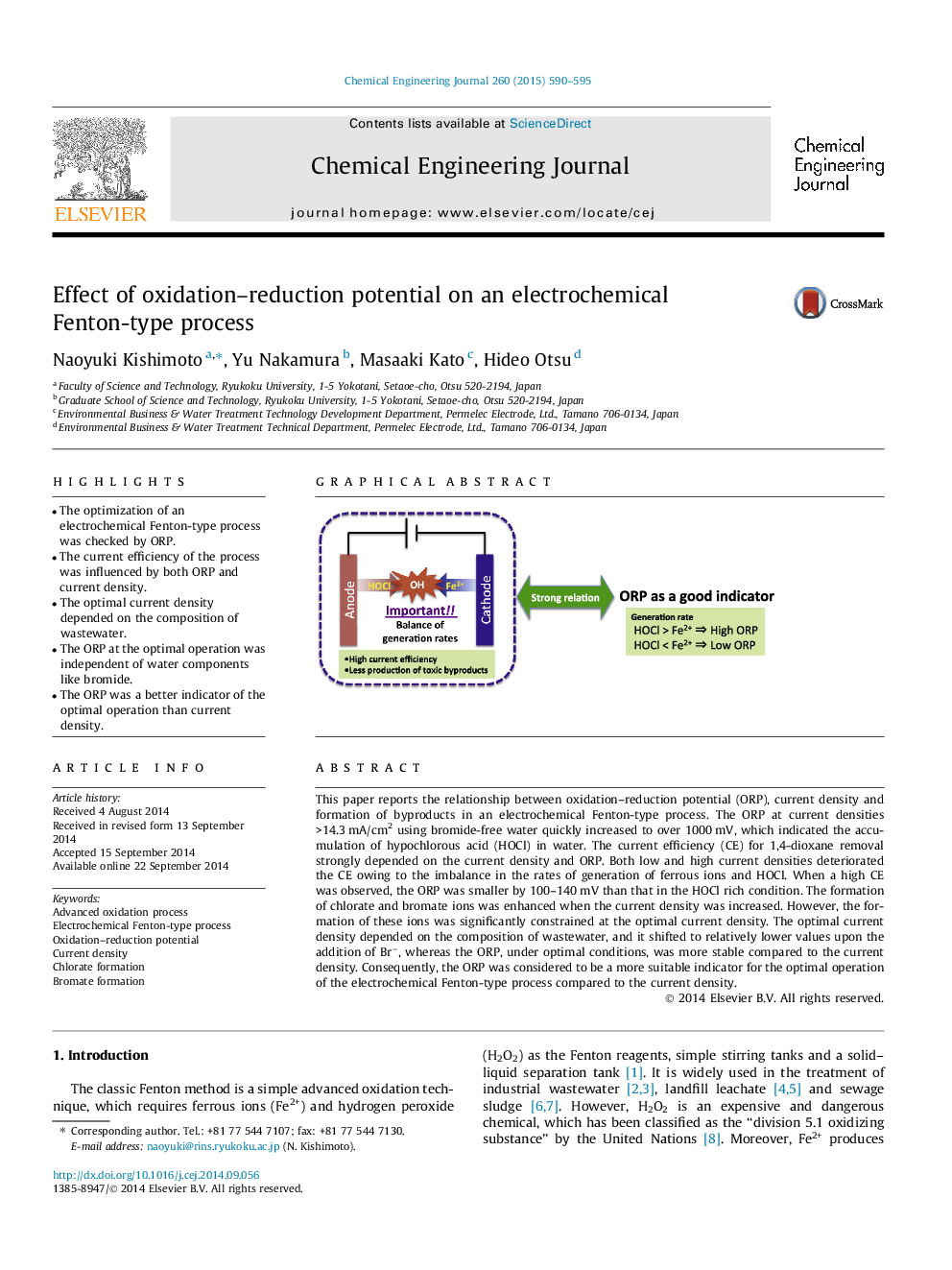| Article ID | Journal | Published Year | Pages | File Type |
|---|---|---|---|---|
| 146767 | Chemical Engineering Journal | 2015 | 6 Pages |
•The optimization of an electrochemical Fenton-type process was checked by ORP.•The current efficiency of the process was influenced by both ORP and current density.•The optimal current density depended on the composition of wastewater.•The ORP at the optimal operation was independent of water components like bromide.•The ORP was a better indicator of the optimal operation than current density.
This paper reports the relationship between oxidation–reduction potential (ORP), current density and formation of byproducts in an electrochemical Fenton-type process. The ORP at current densities >14.3 mA/cm2 using bromide-free water quickly increased to over 1000 mV, which indicated the accumulation of hypochlorous acid (HOCl) in water. The current efficiency (CE) for 1,4-dioxane removal strongly depended on the current density and ORP. Both low and high current densities deteriorated the CE owing to the imbalance in the rates of generation of ferrous ions and HOCl. When a high CE was observed, the ORP was smaller by 100–140 mV than that in the HOCl rich condition. The formation of chlorate and bromate ions was enhanced when the current density was increased. However, the formation of these ions was significantly constrained at the optimal current density. The optimal current density depended on the composition of wastewater, and it shifted to relatively lower values upon the addition of Br−, whereas the ORP, under optimal conditions, was more stable compared to the current density. Consequently, the ORP was considered to be a more suitable indicator for the optimal operation of the electrochemical Fenton-type process compared to the current density.
Graphical abstractFigure optionsDownload full-size imageDownload as PowerPoint slide
